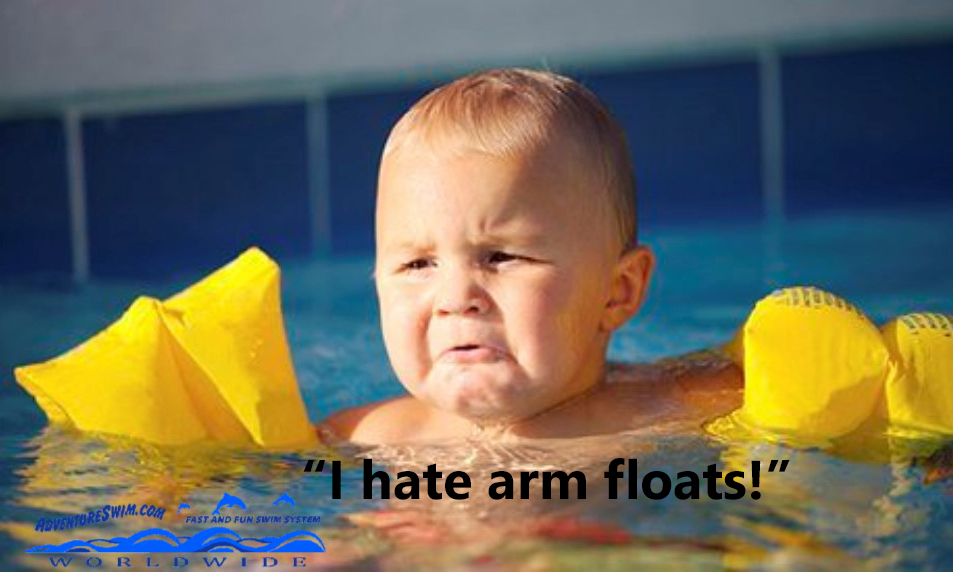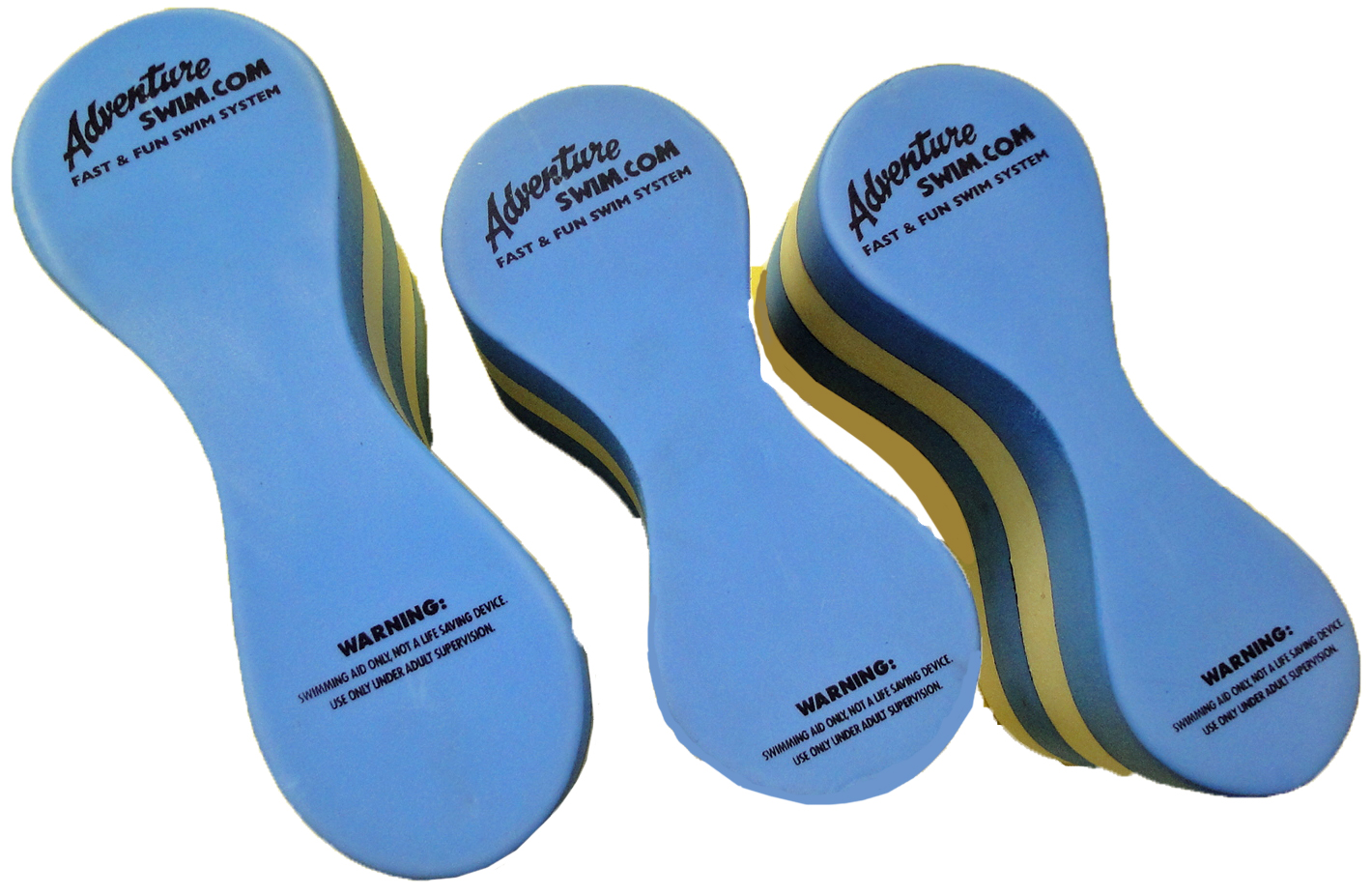BLOG 2 - FLOTATION DEVICES - TO USE OR NOT TO USE?
Posted by Adventure Swim on 17th Nov 2016
Flotation Devices – To Use or Not to Use?

When advising parents about teaching their young children to swim, we discourage the use of flotation devices such as arm floats, life jackets, Puddle Jumpers, et al. Using these types of floats, the child’s subconscious mind perceives that their body should be in the vertical position, rather than the horizontal swimming position.If you have ever seen a child struggling underwater, they are usually in the vertical drowning position with their head just a few inches below the water.This vertical position does not allow for correct body motion.The child aimlessly pumps their arms and bicycle kicks with their legs until someone comes to help them.The child ends up pushing their bodies vertically through the water instead of flowing horizontally through the water.The swimming position with their face under water and the hips on top of the water allows the child to swim through the water.
These types of floats also get the child used to having their head way up high out of the water, rather than having their chin down in the water. This makes it extremely difficult for the child to get used to having the water up around their ears and chin.The child needs to feel comfortable down in the water so that once they are swimming, it will be easier for them to learn to swim with their head down, and then raise their head slightly for a breath, and finally, put their face back down in the water to continue swimming.
We see it all the time. At the start of our Beginner class, we have the child use a Deluxe Kickboard to hold onto as they kick across the pool.Right away we are able to identify children who have been used to wearing water wings, puddle jumpers, or life jackets.They will hold their head high out of the water, and rather than kicking their feet behind them in the water, they bicycle kick their feet straight down to the bottom of the pool, making it very hard to make any forward progress through the water - even with the kickboard.
We have found that while children without these issues can learn to swim in a short time, the child who has been wearing flotation devices at home will spend the whole set of lessons, just getting over the bad habits that they have developed. By the end of the week, they are just starting to feel comfortable kicking their legs behind them. Many will continue to struggle with keeping their head too high, making rotary breathing more difficult to master. They may learn to swim, but it is harder for them to become good swimmers.
If flotation devices cause bad habits, why do we sell/use them?
There are times when instructors might identify a student’s shortcomings or areas to work on, such as rotary breathing or improper kicking. The instructor then may decide to use certain flotation devices as tools for more specialized teaching. Since our buoyancy comes from our lungs, the most helpful flotation devices are ones that offer a slight bit more buoyancy in the lung area.There are some benefits to using these types of floats when used properly by a skilled instructor:
- Helps to build the child’s confidence in the water and their confidence in their own ability in the water.
- Helps the child become accustomed to the horizontal body position.
- Useful in teaching a child rotary breathing.
- Helps instructor to get the swimmer to focus on a single aspect of their stroke in order to refine it.
Examples of Specialized Instruction using floats:
The Back Pack Float was designed to allow beginning swimmers to gain confidence in the water. It will encourage them to remain horizontal, and it will not offer all the opportunities to gain the bad habits other types of floats tend to instill. It gives them the self-confidence to attempt to swim longer distances.It also helps them learn to keep their hips up closer to the surface of the water while at the same time, keeping their chin/head low and close to the water.
Developing good breathing habits while learning to swim is one of the most important aspects of the sport. The Belt Float is a great way for progressing swimmers to become more efficient while taking breaths, by assisting in keeping the body horizontal, they keep their hips up and close to the surface. While their hips are up and head down, they will have an easier time lifting their mouth for a quick breath, then putting their face back down in the water as they continue swimming. Each belt has six removable floats, which can be removed as the user gains skill and confidence.
The Pull Buoy helps swimmers keep their hips up on the surface while they build strength and endurance in their arm stroke.The Pull Buoy can be used in various ways to make improvements to the freestyle stroke and the back stroke. A swimmer using only their arms and holding a Pull Buoy between their legs can actually swim faster than if they were kicking their feet.These floats can be used to help the child concentrate on one aspect of their stroke in order to refine it, while still maintaining good body position in the water.
Professional, trained instructors can find many unique and creative ways to use these floats to refine the learning swimmers’ skills.We would love to hear your ideas for using these floats to make better swimmers out of your students!




